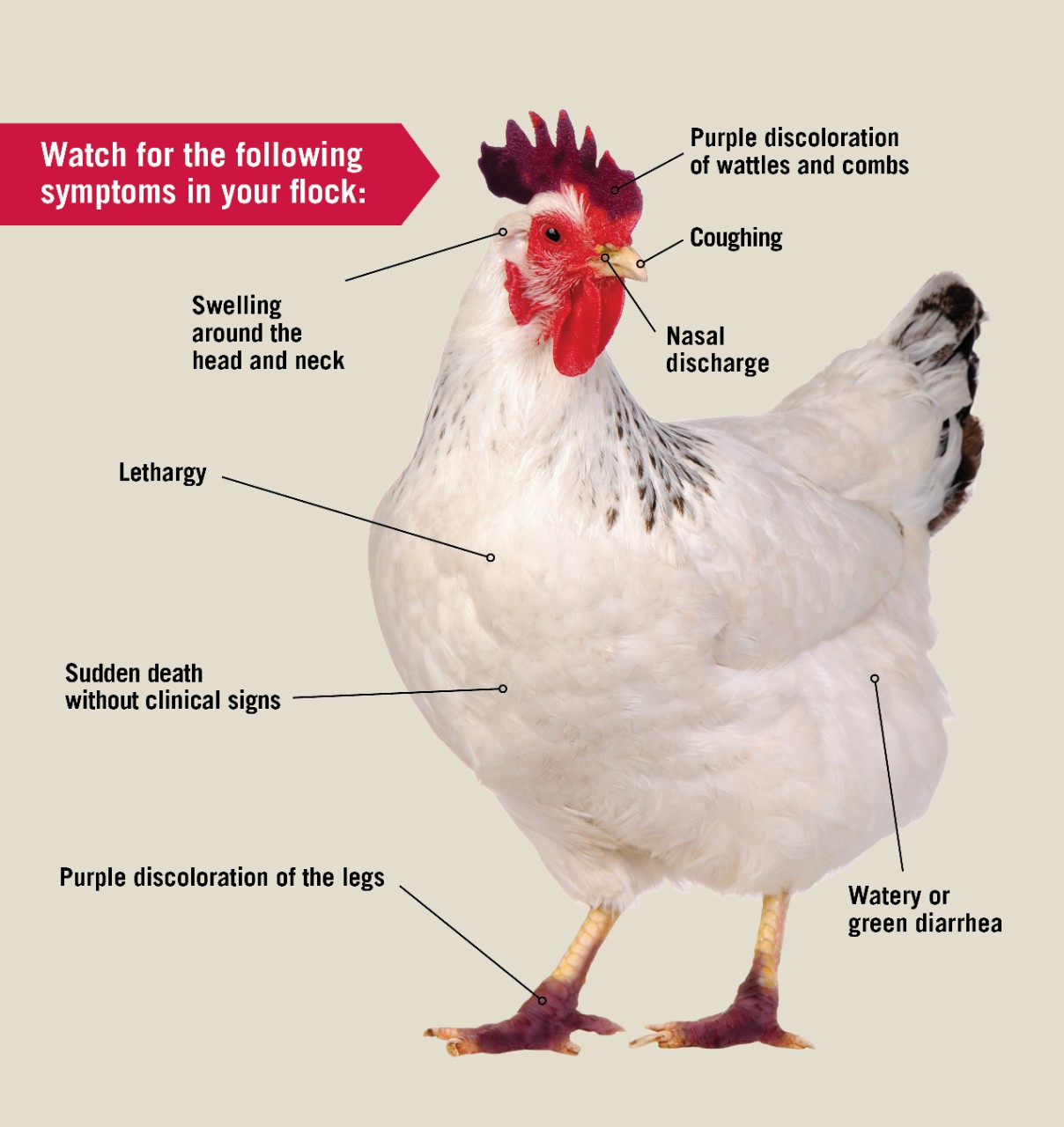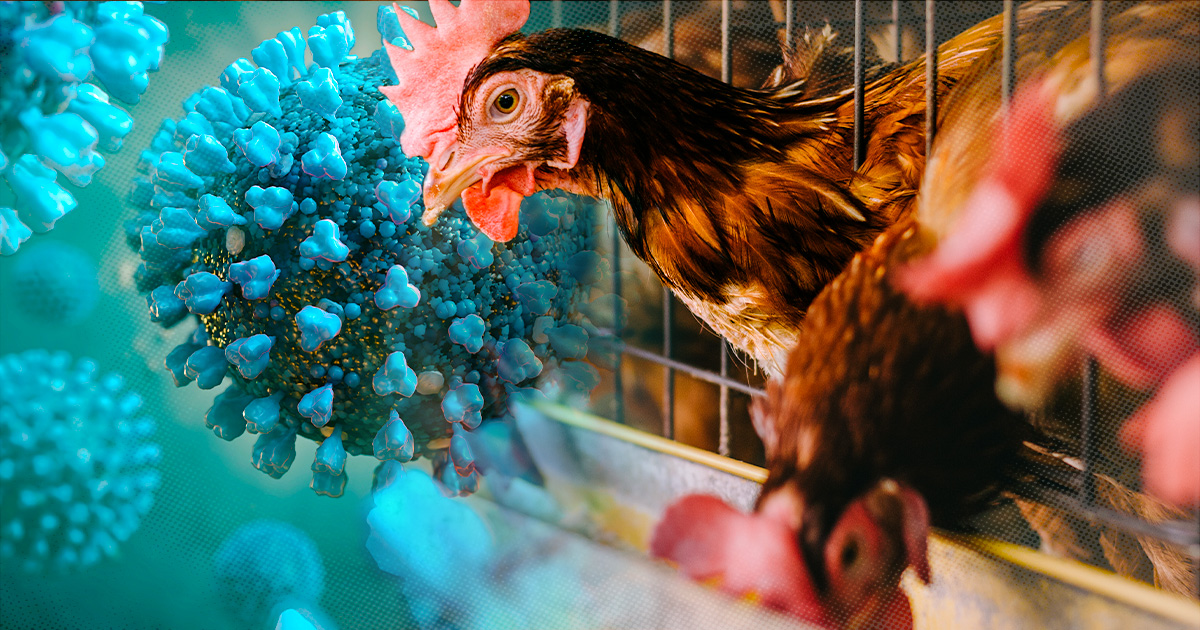Bird Flu Alert: Latest Updates & What You Need To Know - 2024
Are we on the brink of another pandemic, this time fueled by a virus that jumps species with alarming ease? The escalating presence of avian influenza, or bird flu, particularly the H5N1 strain, and its recent expansion into mammals, including dairy cows in the United States, demands our immediate attention and understanding.
The situation is evolving rapidly. The H5 bird flu is not only widespread among wild birds globally but is also wreaking havoc in poultry farms, leading to significant economic losses and raising critical concerns about public health. Furthermore, the virus's ability to infect dairy cows in the U.S. marks a concerning shift, increasing the potential for human exposure and, consequently, the risk of wider transmission.
While the current public health risk is considered low by the Centers for Disease Control and Prevention (CDC), the agency is closely monitoring the situation, collaborating with state health departments to track individuals exposed to infected animals. This proactive approach is crucial, as early detection and intervention are key to mitigating any potential surge in human cases.
- Kim Young Daes Love Life A Guide To His Relationships
- Exploring The Allure Of Erome Girlylana A Digital Sensation
The primary culprit behind bird flu is the avian influenza A virus. This virus has various strains and subtypes, each with different characteristics. The H5N1 strain, in particular, is categorized as a highly pathogenic avian influenza (HPAI) virus, meaning it can cause severe illness and high mortality rates in birds. This specific strain is currently affecting both wild and domestic birds, as well as dairy cattle in the United States.
People of all ages who develop bird flu symptoms after being exposed to avian influenza A virus-infected or potentially infected birds, dairy cows, or other animals should seek immediate evaluation by a healthcare professional and receive treatment with the antiviral medication oseltamivir as soon as possible if they have or are suspected to have the illness. This prompt response is critical to minimize the severity of the disease and prevent further spread.
Avian influenza, often referred to as bird flu, is a zoonotic disease. This implies that the virus can transmit from animals to humans. While the virus primarily affects birds, it can also infect humans and other mammals. The severity of the illness in humans can vary, ranging from mild flu-like symptoms to severe respiratory complications, and, in some cases, even death. Direct contact with infected animals, such as poultry or dairy cows, or contact with environments contaminated with the bodily fluids of infected animals, poses the greatest risk of transmission.
- Vijay Varmas Past Marriage Unveiling The Mystery Of His First Wife
- Exploring The Allure Of Sondra Blust An Insight Into Her Onlyfans Journey
The current outbreak of HPAI in North America necessitates a thorough understanding of its transmission, risks, and prevention strategies. Learning about how this virus affects different species, including humans, is essential for safeguarding public health. Moreover, staying informed about outbreak responses, producer support programs, and the latest detections is crucial for an effective and coordinated approach to tackling this complex challenge.
Avian influenza in poultry, specifically domesticated birds such as chickens, turkeys, and ducks, can be contracted through direct contact with infected waterfowl, other infected poultry, or by coming into contact with surfaces contaminated with the virus. This highlights the need for strict biosecurity measures on poultry farms to prevent the spread of the virus.
The H3N8 subtype has been detected in wild birds and poultry in Asia. Although the risk to the general public remains low, a small number of H3N8 virus infections have been reported in China, resulting in severe pneumonia in a few cases, including one fatality, and mild illness in others. This underscores the importance of vigilance and continuous monitoring of emerging viral strains.
The first confirmed human case of H5N1 bird flu linked to the outbreak in dairy cows in the United States was reported on April 1, 2024, in Texas. This event was also likely the first instance globally of a human infection with the avian influenza A(H5N1) virus acquired from a cow. This development is a wake-up call, signaling a potential shift in the virus's behavior and the need for heightened surveillance and preparedness.
The spread of avian influenza has had a devastating impact on global bird populations, with the deaths of over 300 million birds worldwide. United Nations health officers have warned that the virus is increasingly crossing species barriers, posing a significant threat to both animal and human health.
The best way to prevent H5N1 bird flu is to avoid sources of exposure whenever possible. This includes practicing stringent hygiene, avoiding contact with sick or dead birds, and taking precautions when handling poultry or dairy animals. Using appropriate personal protective equipment (PPE), such as respirators and eye protection, is crucial for individuals working in environments where exposure to the virus is a possibility.
Many countries are adopting vaccination strategies for birds as a preventive measure against avian flu. Mexico, for instance, has largely managed to avoid the current outbreak through widespread vaccination efforts. While an appropriate vaccine is available in America, it has yet to be implemented.
Health experts are raising concerns about the potential for another pandemic due to the H5N1 avian flu. The virus's spread across the U.S. has resulted in significant poultry losses and underscores the need for comprehensive strategies to manage the outbreak and reduce its impact.
The potential for bird flu to transmit between humans is a critical area of concern. Should the virus evolve to spread efficiently from human to human, the consequences could be dire. This emphasizes the importance of understanding the mechanisms of viral evolution and implementing strategies to slow down viral transmission.
Avian influenza a (H5N1), bird flu, and H5N1 bird flu all refer to an illness caused by influenza type a viruses, which primarily affect birds. The disease varies in severity depending on the strain and species affected, and it can range from causing no symptoms to causing mild or severe illness or even death.
Human infections are primarily acquired through direct contact with infected poultry or contaminated environments. This highlights the importance of protective measures for individuals working with or near potentially infected animals.
The primary focus should remain on prevention. The best way to prevent infection is by avoiding exposure to infected birds, dairy cows, other animals or contaminated surfaces. The measures include protecting yourself by using appropriate PPE such as respiratory and eye protection, whenever you are in close contact with potentially infected animals or in contaminated environments.
Prompt action is crucial. Anyone with symptoms following potential exposure to the virus should seek immediate medical evaluation and treatment with antiviral medications like oseltamivir.
The ongoing situation of avian influenza requires a global, coordinated effort, including monitoring, prevention, and public health management strategies. Staying informed, adhering to expert guidelines, and maintaining a high level of vigilance are critical to reducing the impact of this evolving health challenge.
Avian influenza, commonly known as bird flu, is a zoonotic disease caused by avian influenza A viruses. While these viruses primarily infect birds, they can occasionally transmit to humans, resulting in severe illness and potentially death. This disease has garnered significant global attention due to its potential to cause widespread, lethal outbreaks in poultry and severe infections in humans. The ability of the virus to cross species barriers is a worrying trend.
| Strain/Subtype | Affected Species | Transmission | Symptoms (in Humans) | Prevention |
|---|---|---|---|---|
| H5N1 | Wild Birds, Domestic Birds (Poultry), Dairy Cows, Humans | Direct contact with infected animals or contaminated environments | Mild to severe flu-like symptoms, respiratory complications, potentially death | Avoidance of exposure, use of PPE, hygiene, vaccination in birds |
| H3N8 | Wild Birds, Poultry, Rarely Humans | Likely similar to H5N1, direct contact with infected animals | Mild illness, Pneumonia (rarely) | Avoidance of exposure, hygiene |
The swift action and collaboration between government, health authorities, and the public are necessary to manage and control the spread of the avian influenza.



Detail Author:
- Name : Lucy Ernser
- Username : wiegand.lewis
- Email : nora.gaylord@nicolas.com
- Birthdate : 1985-03-07
- Address : 83396 Morissette Prairie Port Rosannamouth, WI 96997
- Phone : +1 (520) 627-1465
- Company : Marquardt Group
- Job : Financial Specialist
- Bio : Ut laborum non non quibusdam. Placeat sit non doloribus quia non. Dignissimos itaque velit laboriosam.
Socials
linkedin:
- url : https://linkedin.com/in/walshm
- username : walshm
- bio : Consectetur ullam optio ipsum est ut.
- followers : 420
- following : 862
twitter:
- url : https://twitter.com/mwalsh
- username : mwalsh
- bio : Magnam sit quis quis ab veritatis. Quis hic ipsa sed quis reiciendis voluptates aut. Animi molestias nam architecto aut reprehenderit tenetur.
- followers : 4497
- following : 2633
tiktok:
- url : https://tiktok.com/@walsh2005
- username : walsh2005
- bio : Quisquam ut nostrum qui non voluptatem fuga quibusdam.
- followers : 1470
- following : 268